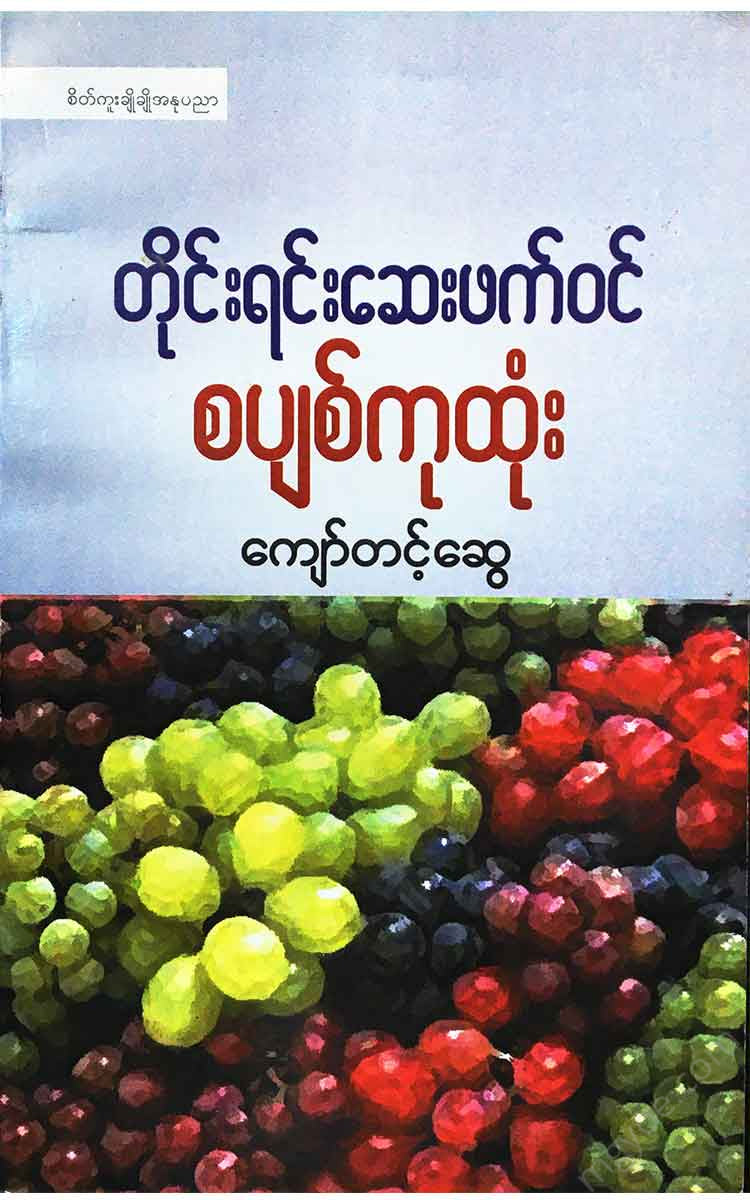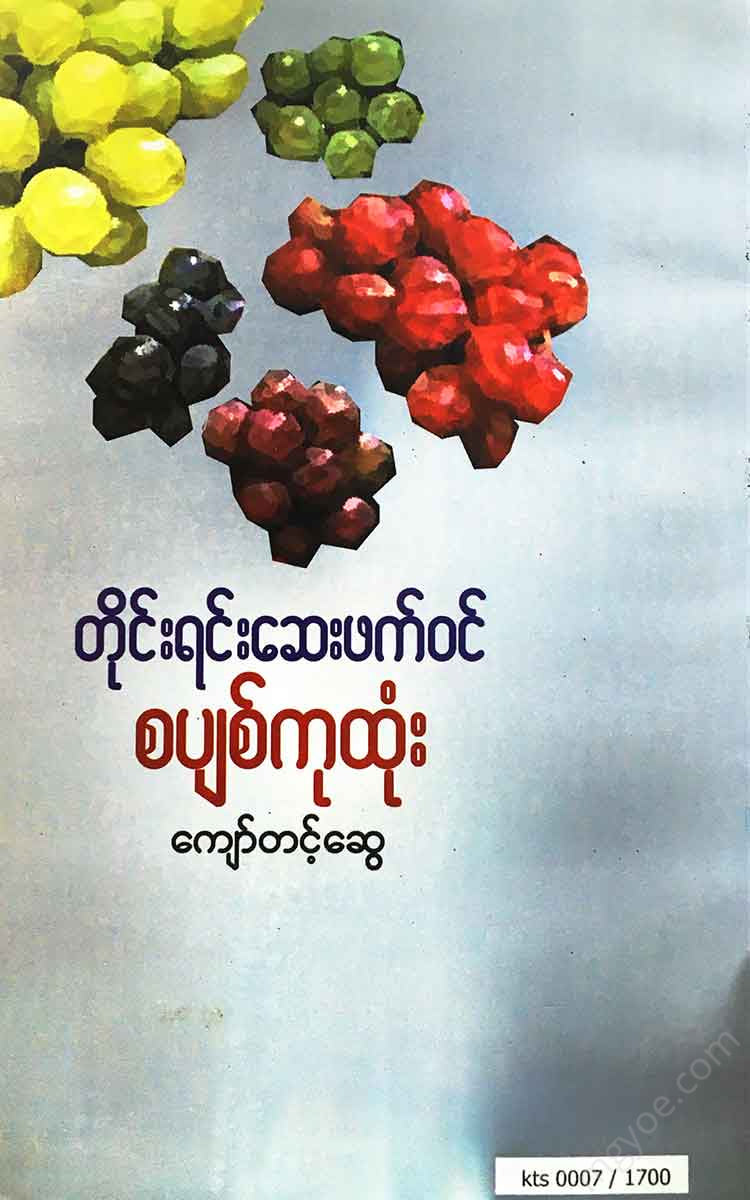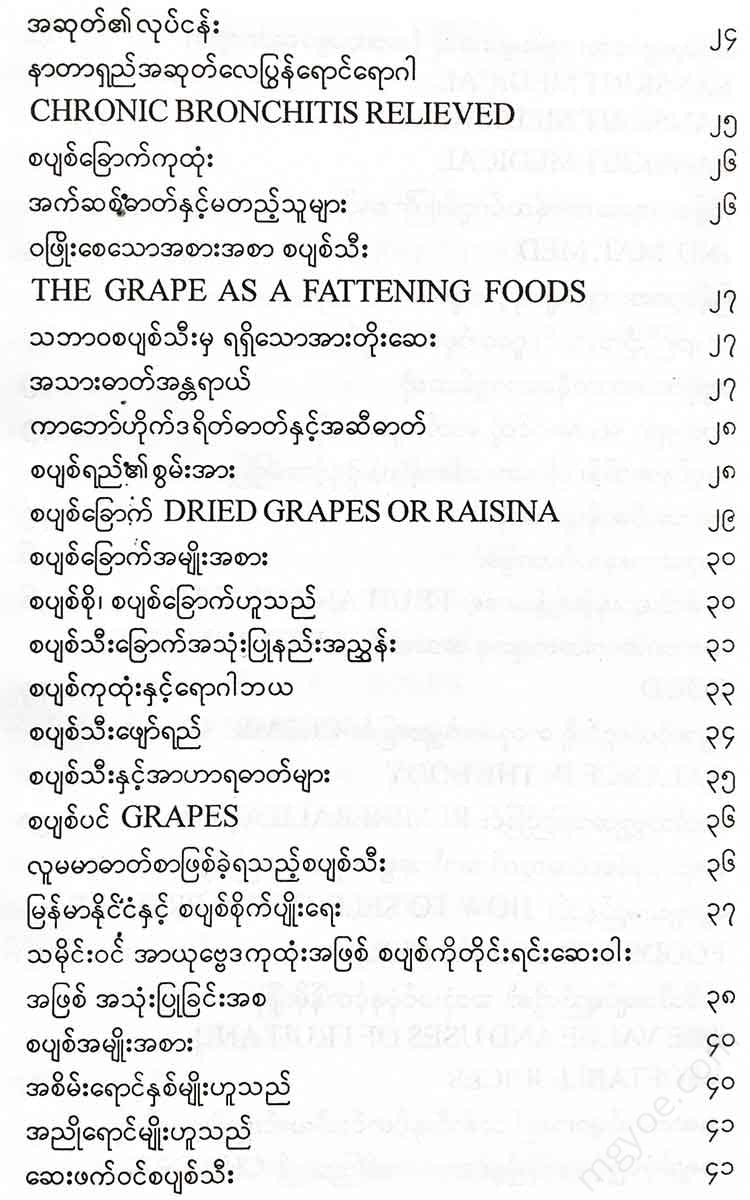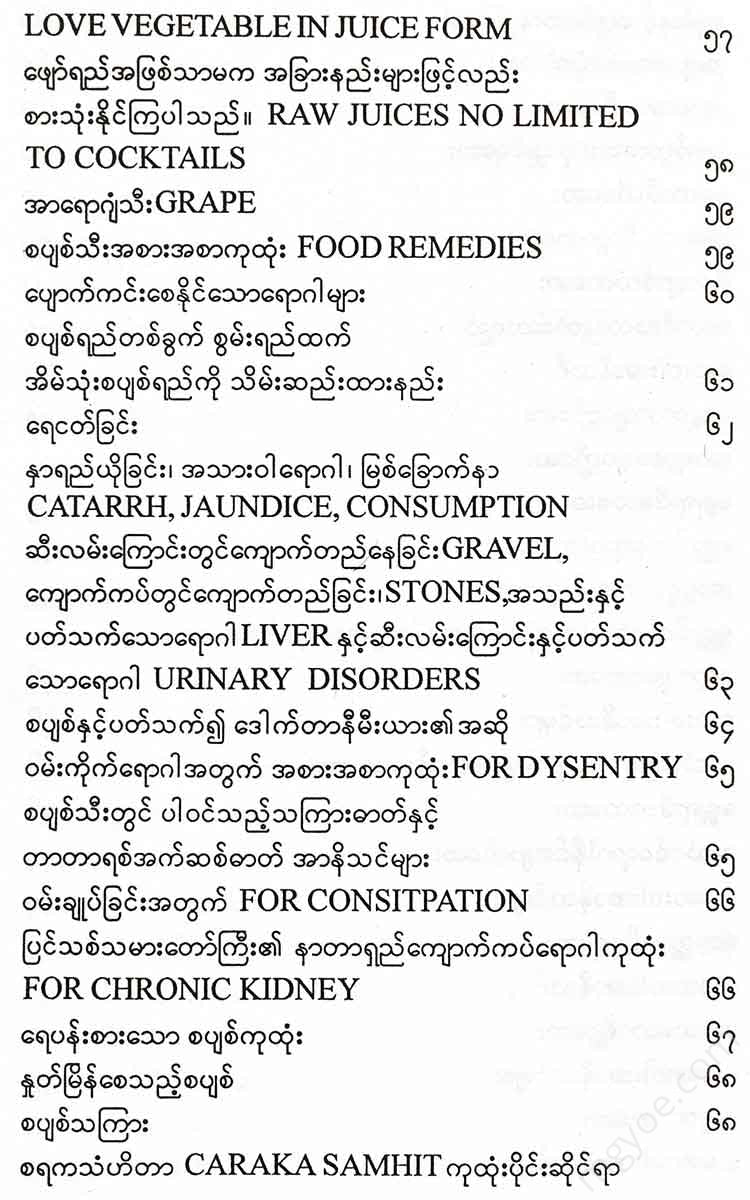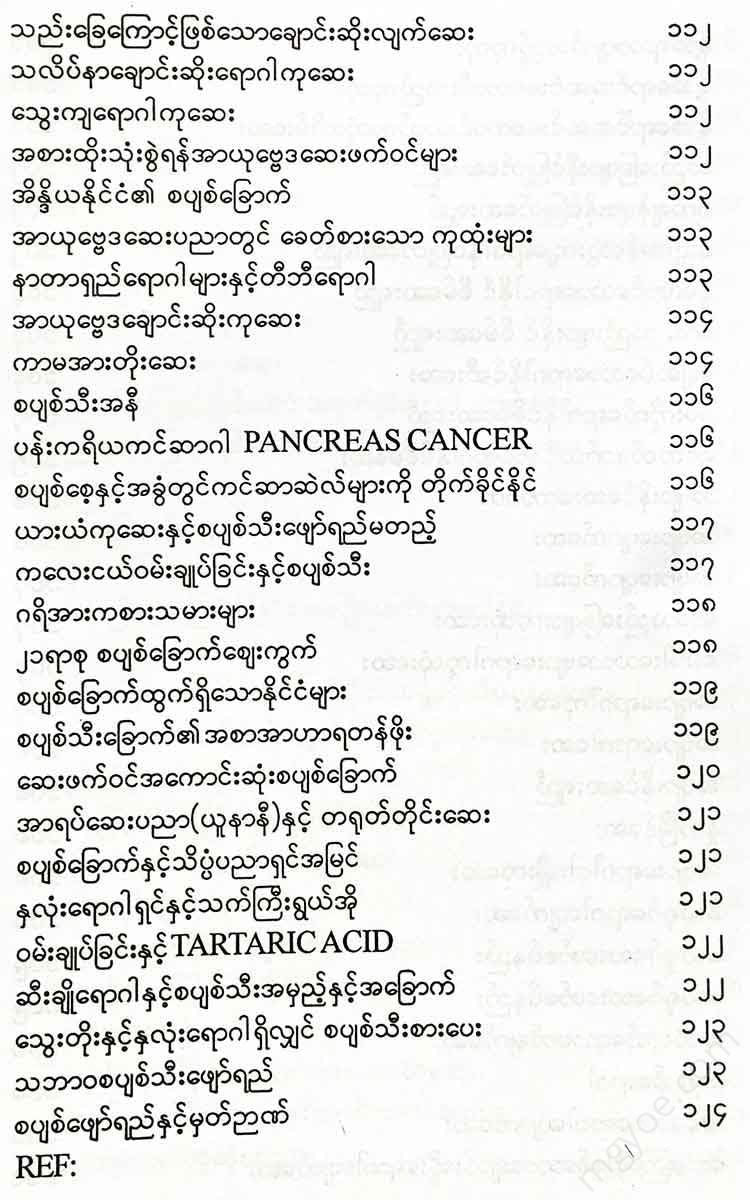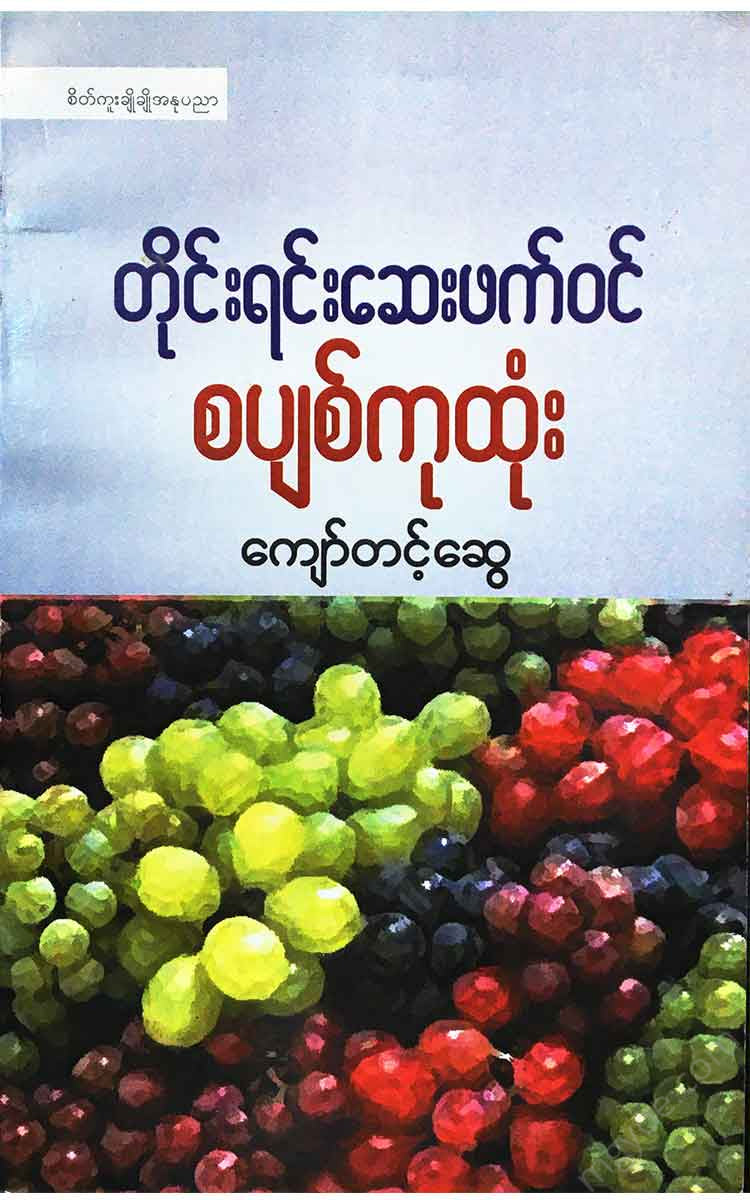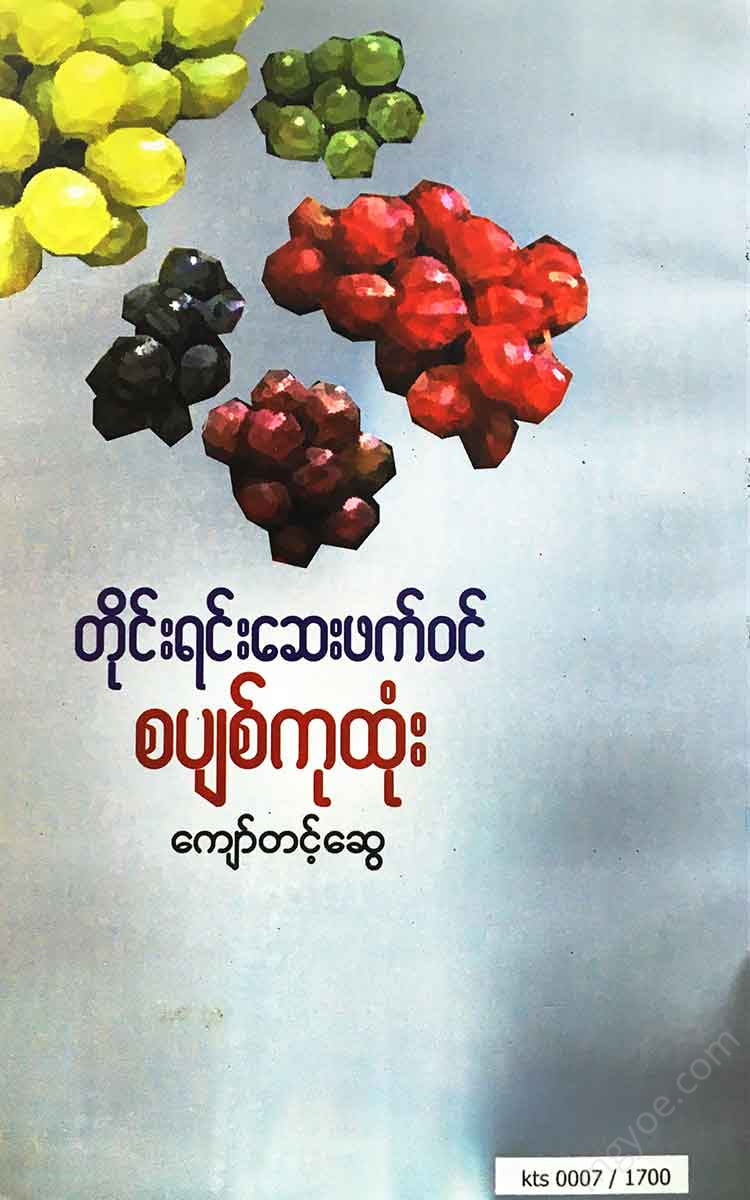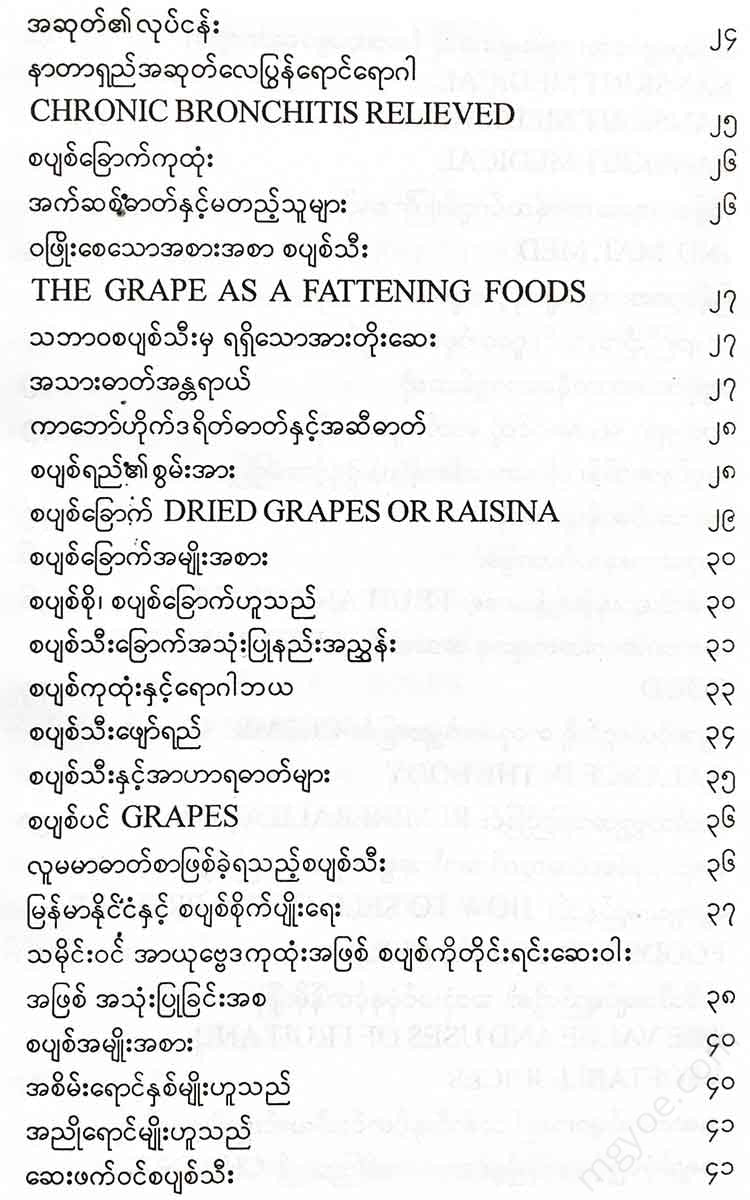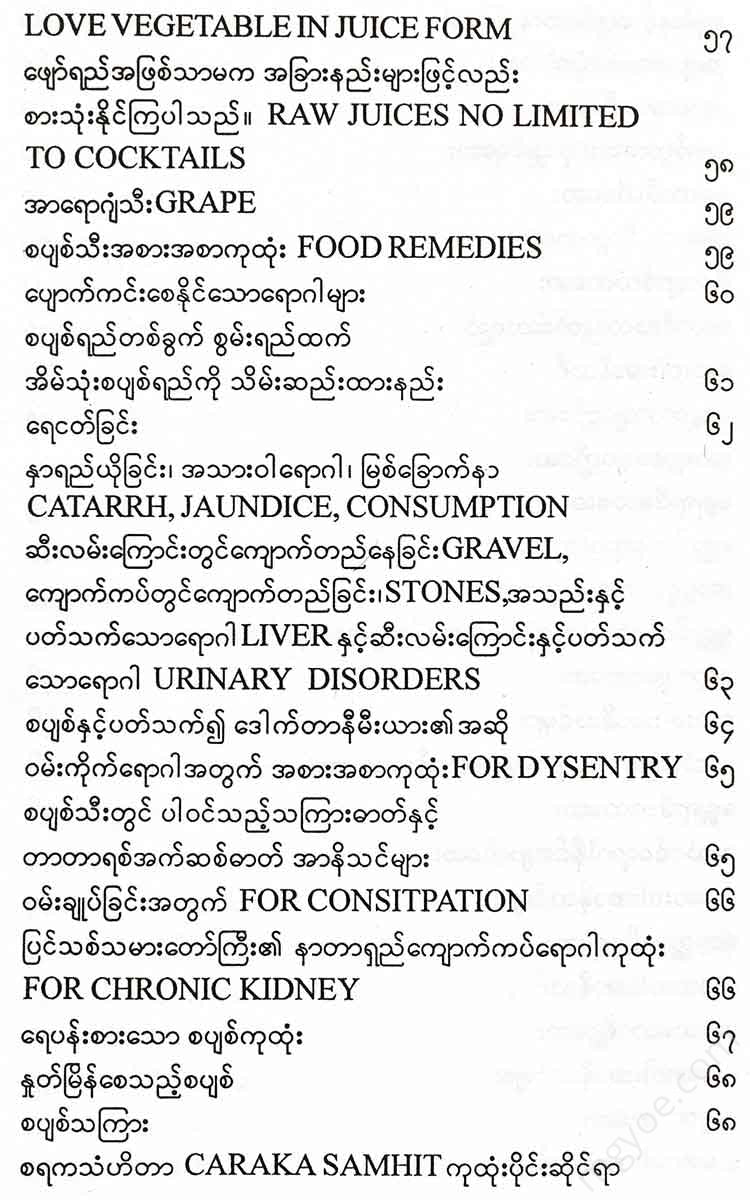စိတ်ကူးချိုချိုစာပေ
Kyaw Tint Swe - Traditional herbal medicine grape therapy
Kyaw Tint Swe - Traditional herbal medicine grape therapy
Couldn't load pickup availability
Introduction
INTRODUCTION
The grape VITIS VINIFERA, which everyone knows, is called ANGUR in Hindustani and DAKHA in Sanskrit.
Well, even if it's MRIDIRKA, it's DRAKSHA.
Well, in Telugu, TELEGU , Tamil , it is called DRAKSHA, in Gujarati, it is called MUDRAKA, and in Bengali, it is called DRAKAYA.
It is a type of vine called VINE. It is a type of fruit that grows along the stem, and the fruits are borne in clusters. Sometimes a single cluster can weigh up to 2 pounds.
Grapes
Although there are over 20 varieties of grapes, only three are mainly known in India. They are:
1. Small grapes (seedless variety)
2. Black grapes
3. True grapes (yellowish green).
History of wine
Grapes are one of the most popular fruits in temperate and subtropical regions, and can be grown up to 55 degrees north of latitude. They are native to Western Asia, and are still grown wild in the Caspian Sea, the Caucasus, and Armenia. Records of the cultivation of grapes and the production of wine from them date back to the beginning of history, at least 600 years ago. Grapes were first introduced to Europe by the Phoenicians, and there is also evidence of a viticultural culture among the ancient Greeks and Romans.
Viticulture
Grapes require a relatively warm and humid climate to grow. Therefore, the main countries in the world that grow grapes are the countries surrounding the Mediterranean Sea, especially Greece, Italy, France, Algeria, and Morocco. In India, grapes are grown extensively in the northwestern regions. They are also grown in some parts of Punjab, Kashmir, Baluchistan, Afghanistan, Poona, and Bangalore. The grapes grown in Quetta and German Chaman are known for their sweetness and excellent taste. The grape season in the markets begins in June and the grapes are available in the markets in September. Thanks to rail transport and refrigeration systems, grapes can reach every part of India in good condition.
In South and North American colonies and Australia, grapes are grown primarily in large quantities to meet domestic consumption.
Raisins
Grapes are used as fresh fruit and are used to make salosac@icyd:opcoas: RAISINS cał oycos CURRANTS and SULTANAS (KISHMISH in Hindi). Dried grapes make it easier to transport as a product. They are also easy to store and consume when the fresh fruit is no longer available. They are also used in cooking. One of the most common uses is to add a small amount of raisins to cakes, custards, HALWA and KHIR (an Indian dish made by boiling milk and rice over a low heat) to enhance their color and flavor.
Wine and spirits
Grapes are the basis for making high-quality wines such as sherry, champagne and brandy. France is the world's largest producer of wine, thanks to its large grape production. And you should be grateful. In fact, most of the European grapes are turned into wine and brandy every year, and from a health perspective, the process is done by fermenting the beneficial grape sugar GRAPE SUGAR.
The conversion of wine into alcohol in the process of fermentation is a huge economic loss (a waste). Statistically speaking, the amount of wine and brandy produced in the world each year is about 5 billion gallons, and this process also destroys about 5 million tons of natural grape sugar every year. If this amount of sugar were used naturally, it could keep two million people healthy for a whole year.
In Kashmir and some other parts of India, liquors made from grapes were consumed with great profit by the worshippers of BAECHUS.
Grape therapy
THE GRAPE CURE As will be explained in detail in the following chapters, grapes contain very valuable nutrients and health-promoting properties. The substances they contain have the power to cure many diseases. In particular, they can cure diseases related to ANAEMIA DISEASES OF THE KIDNEYS «p:9° savuroalicos:eme:. It is because of these ideas that grape therapy has been popular in all countries since ancient times.
Sending patients abroad for treatment
Ancient physicians from INDIA, ARABIA, and GREECE sent some patients to grape-growing countries and instructed them to eat a grape every 5 or 3 minutes for 12 to 16 hours a day, and to give grape juice or grape juice or dried grape juice to children, sick people, and the sick.
European wine therapy
Similarly, in Europe, the grape cure became very popular during the harvest season. It was practiced in several health camps in southern Germany, Australia, and Italy. In these camps, people were fed only grapes for 4 to 8 weeks. The daily intake of grapes was increased gradually to 8 pounds, depending on the age and condition of the patient. The main advantage of this method is the simplicity of the nutrients. These nutrients provide protein and carbohydrates in an easy-to-use form. At the same time, the alkaline salts (such as potassium, calcium, magnesium, and iron) in grapes can help balance the effects of acidity in the blood. This is because the vitamins A and C in fresh grape juice restore the health benefits.
Scientific analysis of grapes,
THE CHEMICAL ANALYSIS OF GRAPES
To fully understand the nutritional and medicinal value of grapes, let's take a look at their chemical composition.
The types and proportions of natural substances contained in grapes vary greatly depending on the climate, soil type, and geographical location of the country where the fruit is grown.
Thus, the sugar content is 15% to 30%, the protein content is 0.6% to 1.5%, the starch and carbohydrates are 3% to 4%, and the tartaric acid content is 0.5%.
Grape color and sweetness, acidity
There are many varieties of grapes in India. Some are sour and some are completely sweet. The sour ones have more ACID and less sugar, and vice versa. Green grapes are always sour. This is because their acidity and sugar content are completely different at each stage from that of ripe grapes. Unripe grapes (not too green or too ripe) contain the most MALICACID and grape sugar, and this is the case during the ripening process.
The acidity and sugar content of other fruits are also similar. Therefore, if a fruit is to be tested in a laboratory, care must be taken to ensure that it is not completely ripe.
For nutrition and health
On average, the following seven (7) natural substances are found in grapes.
WATER 77.9 %
PROTEIN 1.0% fat
FAT 1.2%
